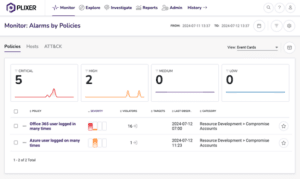Xirrus IPFIX support provides network admins greater insight into what is going on out at the edge. Understanding which devices are creating the most traffic and types of traffic empowers admins to make optimizing tweaks to the networks overall configuration. Making sure that the critical applications receive priority is paramount.
Xirrus is a company that believes in the IHS research firm which cited that:
“The rise of the smartphone and tablet markets has been remarkable, with OEM factory revenue expanding by a factor of nearly nine to $354.3 billion in 2013, up from $41.2 billion in 2007. Revenue this year will rise by a robust 31 percent.
However, the fast pace of growth is slowing, with revenue in 2014 increasing by only 18 percent to reach $418.6 billion. And with Consumer Electronics factory revenue declining in 2014, smartphones and tablets will expand their revenue lead dramatically, rising to a 22.2 percent advantage compared to the entire consumer electronics market. This gap will continue to widen and will reach nearly 35 percent in 2017.”
With this market exploding, you can bet that greater than 95% of these devices will be accessing a wireless network and when this happens, some network admin somewhere will be tasked with managing that traffic. To do this, that network professional will need insight. Xirrus IPFIX support provides the details needed today and hopefully they are thinking about future exports.
This post idea first came to me when I heard about Xirrus NetFlow support. After asking around, I finally received a pdf from one of their field engineers. It was in this document that I learned that Xirrus also has IPFIX support. Whenever I see a vendor making the switch from NetFlow to IPFIX, it tells me that this is a company that understands where flow technologies are going. Unlike NetFlow, IPFIX is open to vendors who want to export something unique that hasn’t been defined by Cisco in NetFlow. IPFIX also supports variable length strings and recently became the official IETF standard for all flow technologies.
A growing wireless market means that administrators will need additional metrics if they are to continually make strides in optimizing end user experience and ensure that business applications such as VoIP and cloud services receive priority. What details will they need?
I’d like to think that the Xirrus IPFIX support is an indicator that they may eventually export details on:
- Mac address – help identify the type of hardware
- Network Name – tells the admin what wireless network the device connected to
- Response Time – the latency experienced with each new TCP flow
- Application Awareness – the layer 7 application the device utilizing. This is normally done through deep packet inspection (DPI) and is becoming more difficult as websites make the switch to SSL.
- User name – by forcing end users to authenticate onto the network and exporting those details in IPFIX, Xirrus NetFlow reporting vendors (IPFIX) can provide better contextual details surrounding the traffic being investigated.
- Packet loss, retransmits, etc.
Kudos to to Xirrus for their NetFlow and IPFIX support. They recognize that their customers need greater insight into the traffic that their hardware is supporting. They also recognize the market trends that will be partially responsible for fueling their growth.



